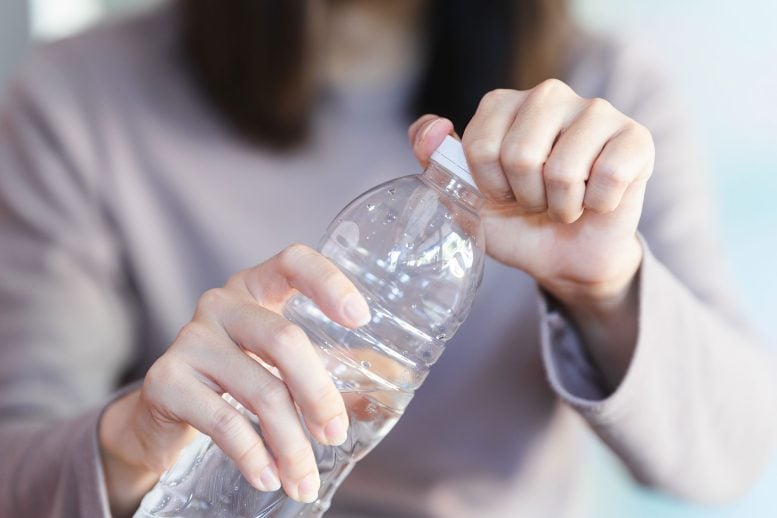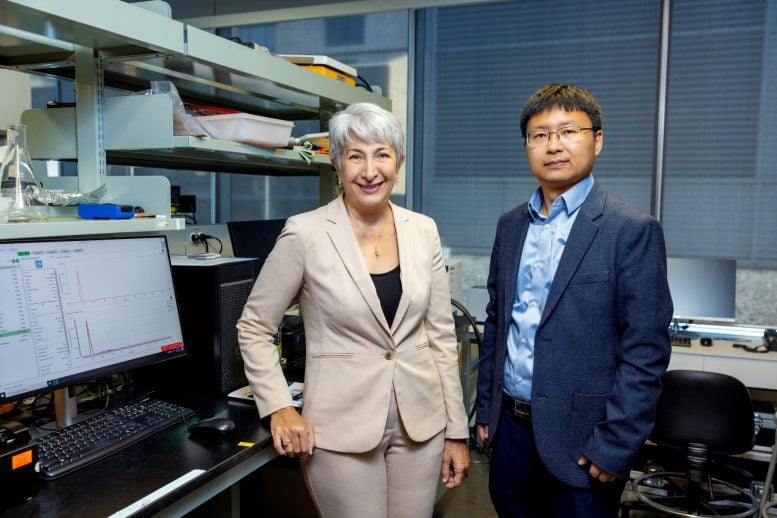
Using it regularly introduces tens of thousands of microplastic and nanoplastic particles into the body each year.
The tropical beauty of Thailand’s Phi Phi islands is not the kind of place where most PhD journeys begin. For Sarah Sajedi, however, it was not the beaches themselves but what lay beneath them that sparked her decision to leave a career in business and pursue academic research.
“I was standing there looking out at this gorgeous view of the Andaman Sea, and then I looked down and beneath my feet were all these pieces of plastic, most of them water bottles,” she says.
“I’ve always had a passion for waste reduction, but I realized that this was a problem with consumption.”
Sajedi, BSc ’91, decided to return to Concordia to pursue a PhD with a focus on plastic waste. As the co-founder of ERA Environmental Management Solutions, a leading provider of environmental, health, and safety software, she brought decades of experience to compliment her studies.
Her latest paper, published in the Journal of Hazardous Materials, looks at the science around the health risks posed by single-use plastic water bottles. They are serious, she says, and seriously understudied.
Sarah Sajedi with Chunjiang An: “Drinking water from plastic bottles is fine in an emergency but it is not something that should be used in daily life.”
Tiny threats, little known
In her analysis of more than 140 scientific papers, Sajedi reports that people ingest an estimated 39,000 to 52,000 microplastic particles each year. For those who rely on bottled water, that number climbs even higher—about 90,000 additional particles compared to individuals who primarily drink tap water.
These particles are invisible to the eye. Microplastics range in size from one micron (a thousandth of a millimeter) to five millimeters, while nanoplastics are smaller than a single micron.
They are released as plastic bottles are manufactured, stored, transported, and gradually degrade. Because many bottles are made from low-grade plastic, they shed particles whenever they are handled or exposed to sunlight and changes in temperature. Unlike plastics that move through the food chain before entering the human body, these are consumed directly from the container itself.

According to Sajedi, the health risks are significant. Once inside the body, these small plastics can pass through biological barriers, enter the bloodstream, and reach major organs. Their presence may contribute to chronic inflammation, cellular oxidative stress, hormone disruption, reproductive issues, neurological damage, and some cancers. Still, their long-term impacts are not fully understood, largely because of limited testing and the absence of standardized ways to measure and track them.
Sajedi also outlines the range of methods available to detect nano- and microplastics, each with benefits and limitations. Some approaches can locate particles at extremely small scales but cannot reveal their chemical makeup. Others identify the material composition but overlook the tiniest plastics. The most sophisticated and dependable tools are often prohibitively expensive and not widely accessible.
Education is the best prevention
Sajedi is encouraged by the legislative action that has been adopted by governments around the world aimed at limiting plastic waste. However, she notes that the most common targets are single-use plastic bags, straws, and packaging. Very few address the pressing issue of single-use water bottles.
“Education is the most important action we can take,” she says. “Drinking water from plastic bottles is fine in an emergency but it is not something that should be used in daily life. People need to understand that the issue is not acute toxicity—it is chronic toxicity.”
Reference: “Unveiling the hidden chronic health risks of nano- and microplastics in single-use plastic water bottles: A review” by Sarah Sajedi, Chunjiang An and Zhi Chen, 14 June 2025, Journal of Hazardous Materials.
DOI: 10.1016/j.jhazmat.2025.138948
Funding: Natural Sciences and Engineering Research Council of Canada
Never miss a breakthrough: Join the SciTechDaily newsletter.
Follow us on Google, Discover, and News.